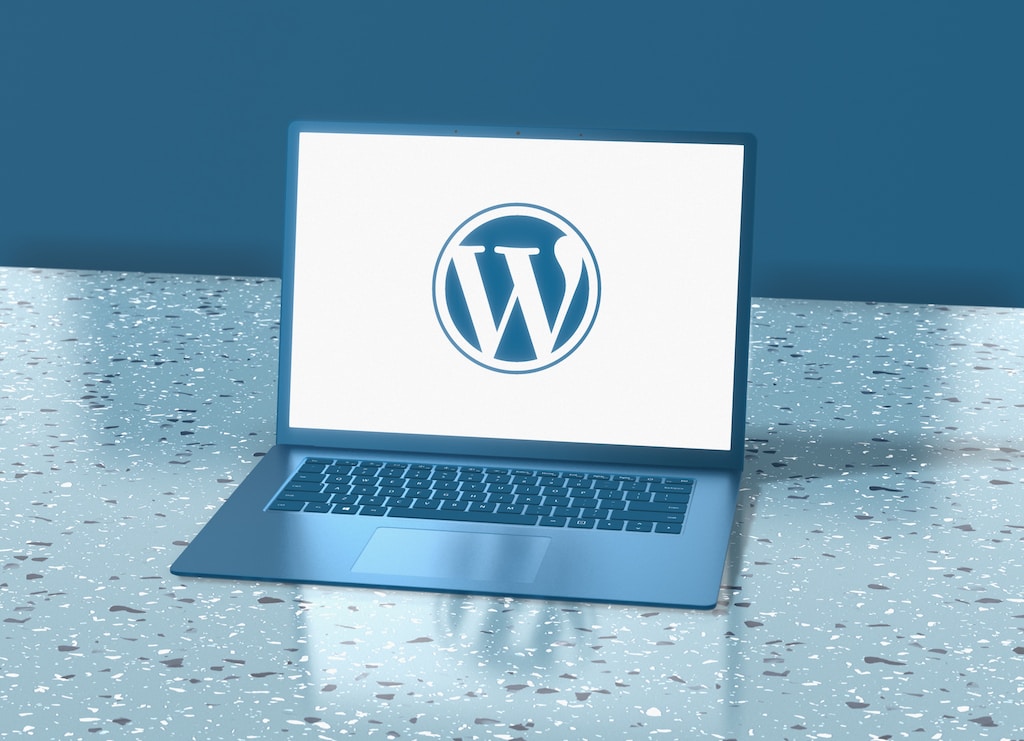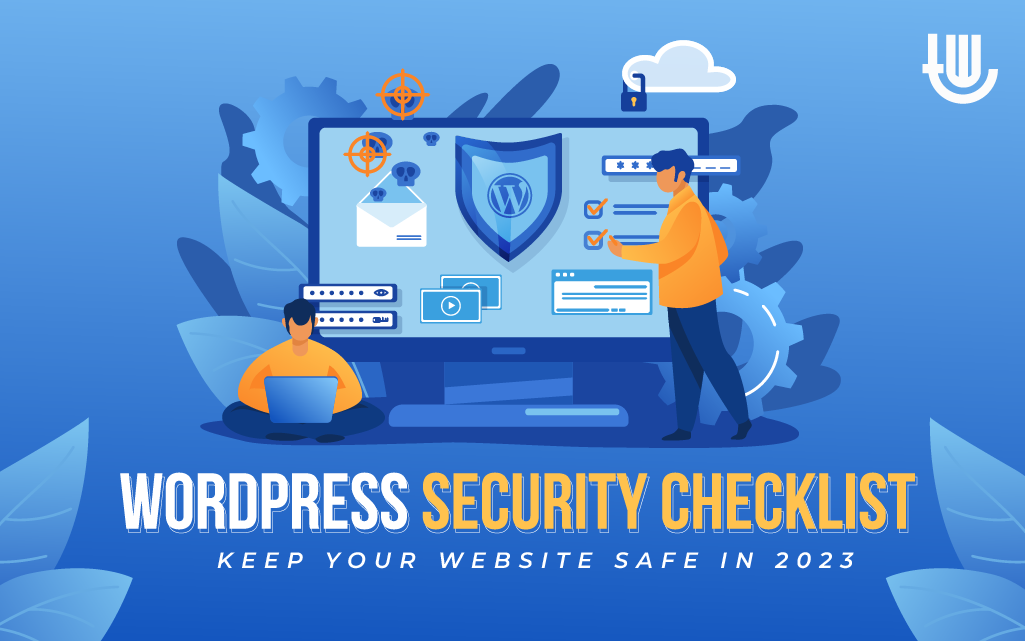
In today’s digital age, having a website has become a necessity for businesses and individuals alike. WordPress is a widely popular content management system that powers millions of websites worldwide. However, with its popularity comes a significant downside – WordPress websites are a prime target for hackers and cybercriminals.
Securing your WordPress website is important to prevent data breaches, cyber-attacks, and security issues. Security breaches can lead to the loss of crucial information, damage to your website’s reputation, loss of revenue, and potential legal liabilities. Therefore, it’s essential to take proactive measures to secure your website and protect your users’ data.
The WordPress security checklist consists of several essential security measures that can help you secure your website and minimize the risk of security breaches. These measures include using SSL certificates, updating WordPress versions, using secure WP-admin, using secured WordPress themes, and strong passwords, limiting login attempts, using WordPress security plugins, using the latest PHP version, ensuring WordPress backups frequently, setting up a safelist and blocklist for the admin login, deleting unused plugins, and managing file permissions.
Using SSL certificates can encrypt the communication between your website and your visitors’ browsers, ensuring that sensitive information is not intercepted by hackers. Updating WordPress versions can fix known security issues, and using secure WP-admin can prevent brute-force attacks on your website. Using secured WordPress themes and strong passwords can prevent hackers from exploiting known vulnerabilities while limiting login attempts can prevent brute-force attacks.
Using WordPress security plugins can help you identify and mitigate security-related issues while using the latest PHP version can improve website performance and security. Ensuring WordPress backups frequently can ensure that you have a copy of your website’s data in case of a security breach or other unexpected events.
Setting up a safelist and blocklist for the admin login can prevent unauthorized access to your website’s admin login page. Deleting unused plugins can eliminate potential vulnerabilities while managing file permissions can prevent unauthorized access to your website’s files and data.
Types of WordPress Breaches
WordPress is a popular content management system that powers around 43% of all websites on the internet. However, with its popularity, it also becomes a prime target for hackers and cybercriminals. WordPress websites can be vulnerable to various types of breaches, including malware, SQL injection, malicious redirects, cross-site scripting (XSS), and backdoors.
Malware
Malware is a type of software designed to damage, disrupt, or gain unauthorized access to a computer system. Malware can be injected into a WordPress website in various ways, such as through infected plugins or themes, outdated software versions, or social engineering techniques like phishing emails. Once malware is injected into a website, it can steal sensitive information, install additional malware, or hijack the website entirely.
To prevent malware from infecting your WordPress website, it’s essential to keep your website’s software up-to-date and only use reputable plugins and themes. Additionally, using a WordPress security plugin can help identify and remove malware from your website.SQL Injection
SQL injection is a type of attack where a hacker can manipulate a website’s database by injecting malicious code into SQL statements. This can result in the hacker gaining unauthorized access to sensitive data, modifying or deleting data, or even taking control of the website entirely.
WordPress websites can be vulnerable to SQL injection attacks if they use outdated software versions, have weak passwords, or use plugins or themes with known vulnerabilities. To prevent SQL injection attacks, it’s essential to keep your WordPress website’s software up-to-date, use strong passwords, and only use reputable plugins and themes.Malicious Redirects
A malicious redirect is when a hacker creates a redirect on a website that leads to a malicious website. Malicious redirects can be injected into a website through infected plugins or themes, outdated software versions, or social engineering techniques like phishing emails. Once a visitor clicks on a malicious redirect, they may unknowingly download malware or give away sensitive information.
To prevent malicious redirects, it’s essential to keep your WordPress website’s software up-to-date, only use reputable plugins and themes, and monitor your website for any suspicious activity. Using a WordPress security plugin can also help identify and remove malicious redirects from your website.Cross-Site Scripting (XSS)
Cross-site scripting (XSS) is a type of attack where a hacker can inject malicious code into a website, which can then be executed by a visitor’s browser. This can result in the visitor unknowingly downloading malware or giving away sensitive information.
WordPress websites can be vulnerable to XSS attacks if they use outdated software versions, have weak passwords, or use plugins or themes with known vulnerabilities. To prevent XSS attacks, it’s essential to keep your WordPress website’s software up-to-date, use strong passwords, and only use reputable plugins and themes.Backdoors
A backdoor is a hidden entrance to a website that can be used by hackers to gain unauthorized access to the website. Once a backdoor is installed, hackers can do whatever they want to the website, including stealing sensitive information, modifying or deleting data, or causing other harm.
WordPress websites can be vulnerable to backdoor attacks if they use outdated software versions, have weak passwords, or use plugins or themes with known vulnerabilities. To prevent backdoor attacks, it’s essential to keep your WordPress website’s software up-to-date, use strong passwords, only use reputable plugins and themes, and monitor your website for any suspicious activity.
In conclusion, WordPress websites can be vulnerable to various types of breaches, including malware, SQL injection, malicious redirects, cross-site scripting (XSS), and backdoors. Now that you’re aware of some common WordPress breaches, let’s discuss some essential security measures to keep your website safe.
WordPress Security Checklist

Use SSL Certificates
Using SSL certificates can encrypt the communication between your WordPress website and your visitors’ browsers. This ensures that sensitive information, such as passwords or credit card details, is not intercepted by hackers. SSL certificates also give your website visitors confidence that their information is secure, which can improve their user experience. Google also gives a ranking boost to websites with SSL certificates, making it important for SEO.
Update WordPress Version
WordPress regularly releases updates that include security patches to fix vulnerabilities. Therefore, it’s crucial to keep your WordPress version up-to-date to ensure that your website is protected from known security issues. You should also update your website’s plugins and themes regularly, as outdated plugins and themes can also pose a security risk.
Use Secure WP-Admin
By default, WordPress has a login page that is easy to guess. This makes it easy for hackers to attempt brute-force attacks on your website. Therefore, it’s recommended to use a plugin or custom code to change the login page’s URL to make it more secure. You can also use two-factor authentication to add an extra layer of security to your login page.
Use Secured WordPress Themes
Free WordPress themes can contain malicious code, making your website vulnerable to attacks. Therefore, it’s recommended to use themes from reputable sources or WordPress agencies to create a custom theme. You should also regularly update your themes to ensure that any known vulnerabilities are patched.
Use Strong Passwords
Weak passwords are easy for hackers to guess or crack. Therefore, it’s crucial to use strong passwords for all user accounts on your website. A strong password should be at least 12 characters long, and contain a mix of uppercase and lowercase letters, numbers, and special characters.
Limit Login Attempts
Limiting the number of login attempts can prevent hackers from trying to brute-force their way into your website. You can use a plugin or custom code to set a limit on login attempts and lock out users who exceed the limit. This can prevent automated attacks and make it more difficult for hackers to gain unauthorized access to your website.
Use WordPress Security Plugins
There are several security plugins available for WordPress that can help you secure your website. Some popular options include Wordfence, Sucuri Security, and iThemes Security. These plugins can help you identify and mitigate security-related issues, monitor your website for suspicious activity, and automate security-related tasks.
Use the Latest PHP Version
PHP is the programming language that powers WordPress, and using the latest version can improve website performance and security. You can check your current PHP version and update it from your web hosting control panel or by contacting your hosting provider.
Ensure WordPress Backups Frequently
Regular backups of your website can ensure that you have a copy of your website’s data in case of a security breach or other unexpected events. You can use a plugin or your hosting provider’s backup service to automate backups. It’s also recommended to store backups off-site to prevent data loss in case of a disaster.
Set Up Safelist and Blocklist for the Admin Login
You can whitelist IP addresses that are allowed to access your website’s admin login page and blacklist suspicious IPs that attempt to access it. This can prevent brute-force attacks and other malicious attempts.
Delete Unused Plugins
Unused plugins can pose a security risk, as they may contain vulnerabilities that can be exploited by hackers. Therefore, it’s recommended to delete any plugins that you’re not using. You should also regularly review your installed plugins and remove any that are no longer necessary.
Manage File Permissions
File permissions determine who can access and modify files on your website. Setting appropriate file permissions can prevent unauthorized access to your website’s files and data. It’s recommended to set the file permissions to the minimum necessary to perform website functions, such as reading, writing, or executing files. For example, you can set permissions for WordPress files to 644 and permissions for directories to 755. It’s also recommended to avoid setting file permissions to 777, as this can make your website vulnerable to security breaches.
In conclusion, following the WordPress security checklist discussed in this article can help you secure your WordPress website and minimize the risk of security breaches. Taking proactive measures, such as using SSL certificates, updating WordPress versions, using secure WP-admin, and all others mentioned in this article can help you ensure that your website remains safe and secure in 2023.
Conclusion
In conclusion, securing your WordPress website is crucial in today’s digital age. With the increasing number of cyber threats and security breaches, it’s essential to take proactive measures to protect your website and your users’ data.
Following the WordPress security checklist can help you improve your website’s security posture and minimize the risk of security breaches. Using SSL certificates, updating WordPress versions, using secure WP-admin, and all that mentioned in the blog post can ensure that your website remains safe and secure in 2023.
Remember to stay vigilant and regularly monitor your website for any suspicious activity. It’s also recommended to educate yourself and your users on best practices for online security. If you’re not confident in your ability to secure your WordPress website, consider hiring a WordPress expert from some of the best WordPress companies available across the web to help you.
Overall, securing your WordPress website should be a top priority to protect your website, your users, and your business.
Frequently Asked Questions
Is It Necessary to Use Security Plugin for WordPress?
While it’s not mandatory to use a security plugin for WordPress, it’s highly recommended to do so. Security plugins can help you identify security vulnerabilities, monitor your website for suspicious activities, and automate security-related tasks.How Do I Secure My WordPress Site Plugins?
To secure your WordPress site plugins, you can follow these steps:
→ Only install plugins from reputable sources.
→ Keep your plugins updated to ensure that they are patched against known vulnerabilities.
→ Delete any unused plugins.
→ Monitor your website for any suspicious plugin activity.
→ Use a security plugin that can help you identify and mitigate plugin-related security issues.What is the Best WordPress Security Plugin?
The best WordPress security plugin depends on your specific needs and requirements. Some popular options include Wordfence, Sucuri Security, and iThemes Security. You can compare features and reviews to find the plugin that best suits your website’s security needs.
If you’re not confident in your ability to secure your WordPress website, you may want to consider hiring a professional. WordPress developers can help you secure your website and ensure that it remains safe and secure in 2023.

Author Bio: Archit has been working with WPWeb Elite since 2015 as a Content Manager. He is a passionate content writer and has a love for WordPress and Digital Marketing so he spends a significant amount of time writing about it.